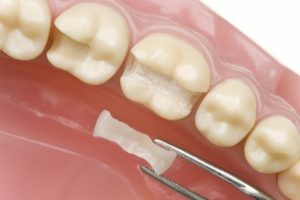 Microprosthetics occupies a special position in modern aesthetic dentistry. This method has significant differences and advantages over the traditional method of manufacturing and installation of prostheses.
Microprosthetics occupies a special position in modern aesthetic dentistry. This method has significant differences and advantages over the traditional method of manufacturing and installation of prostheses.
This method is used for the significant destruction of tooth enamel. The microprosthesis restores not only aesthetics of a smile, but also chewing functions.
There are two types of microprostheses, namely:
- tabs;
- lining.
Microprosthesis is made in special dental laboratories based on impression. The following materials are used for making the microprosthesis:
- ceramics;
- metals;
- composite materials.
Contents of
- What is the procedure for a microstretch?
- Differences from other restoration methods
- When is this method allowed?
- Existing types of microstretch
- Adhesion by
- using special veneer overlays
- Microprosthesis with
- inserts Using special pins
- Stages of procedure
- Advantages and disadvantages of procedure
- What risks can there be?
- Features of care after restoration
- Microprosthes of removable type
- Indications and contraindications to installation
- Features of wearing and care
- Advantages and disadvantages of removable dentures
- Average cost of
- Opinions of patients
What is the procedure for microprosthesis?
Microprosthesis is the process of restoration of teeth, regardless of the degree of destruction. Microprosthesis is an individual seal, in shape and color as close as possible to the real tooth.
This design belongs to the type of permanent prosthesis, which is fixed with a special dental cement mortar for several years. The average life of the microprosthesis is about 10 years.
The main task of this design is to restore the former appearance of the smile with incomplete restoration of the functions of the teeth.
Differences from other restoration methods
Microprosthetics has a number of differences from the usual dental prosthetics:
- , thanks to this method, you can significantly speed up the process of restoring a smile without affecting adjacent teeth;
- pads and tabs are much more durable than photographic plates and with their help you can easily restore the primary appearance of the enamel;
- , this method is increasingly used in the field of aesthetic dentistry to create an ideal smile.
When is this method allowed?
The main indications for the use of microprostheses include:
- the presence of chipped enamel;
-
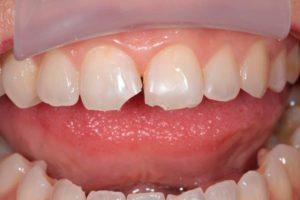 closed root canals resulting from treatment;
closed root canals resulting from treatment; - deep grooves on the surface of the enamel;
- dark-colored enamel;
- various jaw defects;
- notable unnatural cracks;
- curvature;
- significant defects of carious and non-carious origin;
- erasability of the chewing surface;
- teeth mobility.
There are also a number of contraindications, namely:
- non-compliance with oral hygiene rules;
- active development of carious processes;
- small depth of oral cavity;
- inability to ensure complete dryness of the enamel surface.
Existing types of microstretch
Depending on the degree of destruction, possible damage to the root, the health of neighboring teeth, and the wishes of the patient, the doctor determines one or more possible types of prosthetics.
Adhesive prosthesis
Thanks to the adhesive method, one or more defective teeth can be replaced with bridges. This method uses special fiberglass. This material is very durable and has a long service life. The laboratory makes an absent denture with special protrusions that will hold it in your mouth. To do this, on the walls of neighboring teeth, the dentist makes small incisions in which the microprosthesis is inserted. As a result, you get a reliable, comfortable and aesthetically attractive design.
Using special veneer linings
Veneers are special thin plates that are fixed to the outside of the tooth. With the help of a veneer microprosthesis, the following defects can be corrected:
- change shape;
- change the hue;
- eliminate large slots;
- hide the defects of a smile.
In addition, thanks to the veneers, you can safely protect the enamel from the corrosive effects of tea, coffee and cigarettes, which will preserve the normal color of the enamel.
Microprosthetic insertion with
tabs The use of special tabs during the procedure involves the use of specific seals made of polymer material. Such seals have a longer service life than conventional seals, and can also significantly improve the appearance.
Using special pins
With a damaged crown and a healthy root preserved in modern dentistry, it is customary to use microprosthesis using pins. The pin is placed in the root and the crown is already formed on it. This method makes it possible to install a microprosthesis without the need for turning the neighboring ones.
Stages of procedure
The procedure for restoring a smile using a microstretch is carried out in two stages.
- Preparation of .The dentist removes the remains of the native tooth, cleans it from tooth decay and places a temporary seal. After that, to make a mold, a special paste is applied. On its basis, technicians will create a prosthesis.
- Installation of the prosthesis .During the second visit, the microprosthesis is installed with its subsequent adjustment and adjustment.
Advantages and disadvantages of the
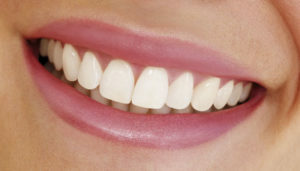
procedure The main advantages of this method are:
- there is no need to touch adjacent teeth;
- full restoration of the primary kind of smile;
- absolute similarity with natural;
- quality removal of cracks;
- attractive appearance, comfort and convenience in operation.
Among the shortcomings of microprostheses can be identified such:
- high cost in comparison with traditional seals;
- repeated visits to the dentist up to 2-3 sessions.
What risks can there be?
Microprosthetics does not imply any effects on the nerve endings and nearby teeth, so it does not carry much risk to the patient.
During the procedure, the doctor must comply with the rules of antiseptic processing of tools and personal hygiene.
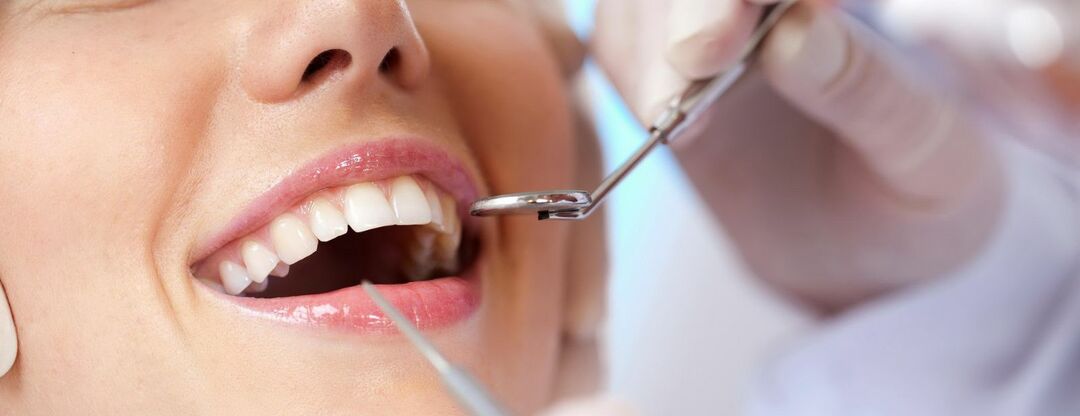
Also important is the general qualification of the specialist and the quality of the materials. With the use of low-quality dental formulations and non-compliance with the technology of prosthetics, there is a possibility of destruction of the microprosthesis.
Features of care after restoration
After the installation of microprostheses, the patient will have to make minor changes to his habitual care of the oral cavity.
Inlays and veneers are very easy to use and can be cleaned with a conventional brush and paste. It is not recommended to use abrasive pastes and folk methods of cleaning soda and hydrogen peroxide. These methods will not brighten the dentures, but will only damage the artificial lining.
Bleaching and professional cleaning also will not yield results, but can damage microprostheses. The ceramic composition, from which the prosthesis is made, does not react in any way to the chemical effect from bleaching agents.
To avoid further destruction, it is recommended to make certain changes in lifestyle and diet. Dental problems often cause a shortage of certain trace elements. To restore the balance of vitamins and minerals, you need to regularly use vitamin-mineral complexes and include in your daily diet more fruits and fresh vegetables. 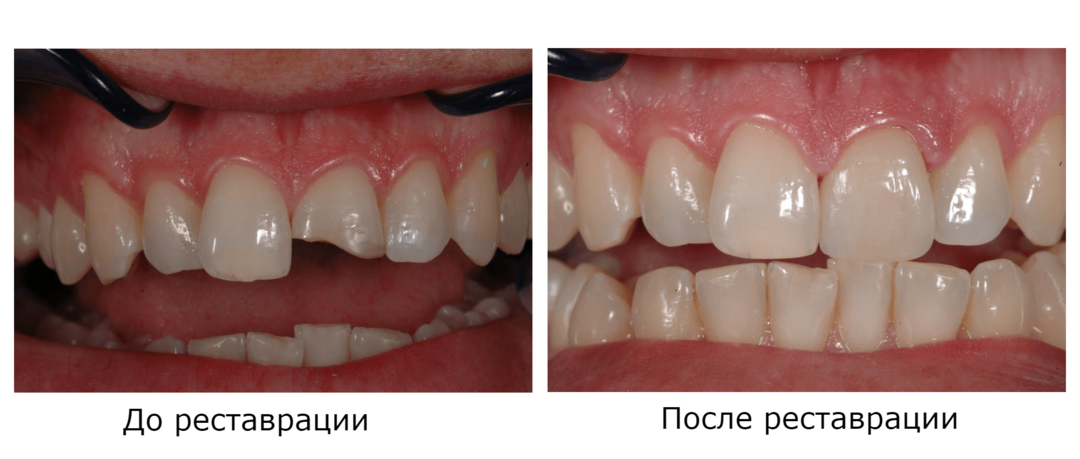
Removable microprostheses
A removable microprosthesis is a method of prosthetics in which the crown is fixed on adjacent teeth with the help of clippers that look like wings. With this method, you can replace 1 to 3 teeth arranged in a row. The prosthesis is easy to use. Because of the shape of the structure, it is called a "butterfly" or "bird".
The removable denture can be made of nylon, acrylic or plastic.
The process of manufacturing and installation of the microprosthesis takes about 2 weeks and includes such stages:
- the doctor makes casts of patients and nearby teeth;
- technician makes prosthesis and fixings to it;
- at the second admission the dentist installs and adjusts the prosthesis.
Indications and contraindications to the
installation Removable microprostheses are particularly useful when the front incisors are lost. Particularly often used before the microprosthesis are 1-2 teeth.
To contra-indications of the installation of such a prosthesis can be attributed:
- serious dental diseases that will serve as a support for the design;
- abnormal structure of the occlusion;
- having more than two broken teeth;
- severe caries lesions;
- inflammation in the oral cavity.
Features of wearing and care
The first time after installing the prosthesis, patients may feel some discomfort. This is due to the addiction to the prosthesis and usually takes 2-3 weeks.
Discomfort is manifested in the following sensations: 
- feeling of a foreign object in the mouth;
- pronunciation disorder;
- increased salivation;
- feeling sdavlennosti;
- irritation of the gums.
Care of these dental prostheses is simple enough. The design can be easily removed and put in place. After eating, the microprosthesis and oral cavity should be thoroughly rinsed with water. As usual, the prosthesis should be cleaned twice a day with a brush and paste. Before going to bed, the butterfly should be immersed in a special solution that destroys the pathogenic microflora.
Advantages and disadvantages of
removable dentures The main advantages of removable microprostheses:
- clippers and crown completely repeat the natural color of the enamel;
- there is no need to edit adjacent teeth;
- can be installed if the patient has gum disease and periodontal disease;
- is the minimum time to restore the old smile;
- prostheses are hypoallergenic and do not react with the acidic environment of the oral cavity;
- is a small cost;
- easy operation.
Among the shortcomings of this technology is worth noting:
- , when it is impossible to secure reliable fixation with plastic fasteners, metal hooks are used that interfere with some patients;
- is not recommended for adolescence;
- some designs quickly wear out and require compliance with the diet.
Average cost of
In different clinics the price of this service is different. In addition, the cost may vary depending on the following factors:
- qualification of the dentist;
- used materials;
- degree of injury;
- number of prostheses to be installed.
On average, microprosthetics costs patients from 5 to 20 thousand rubles.
It should be noted that the quality and aesthetics of microprosthetics fully justify their cost.
The cost of a removable denture depends on the material from which the design is made and the number of teeth that need restoration. In different medical institutions, the price can vary between 3 - 22 thousand rubles.
Patients' opinions
Patients are very popular with the new method of restoration. Microprosthesis is a unique procedure that allows you to completely restore a sick tooth or replace an absent one. Here are some testimonials of patients who underwent prosthetic procedure:
I used to be very complex because of the gap between the front teeth. On the advice of my dentist, I decided to install the veneers. With the help of this method, the doctor completely eliminated my problem, now I can smile and take photos without embarrassment.
Evgeniya, 23
I had two sixes destroyed, namely their chewing surface. I refused categorically. For this reason, my doctor suggested that I install special tabs. The color and shape of the tab completely repeat my natural enamel. I am very glad.
Nikolay, 48
About a year ago I underwent the procedure of microprosthetics. The result remained completely satisfied. There is no discomfort, and the restored part of the smile looks absolutely natural.
Svetlana, 37
I thought that my problem could be solved only by installing a bridge, but my doctor helped me to rejoice, saying that you can do with microprosthetics. The final result was just excellent, and most importantly the procedure itself took only a few sessions.
Marina, 49
Modern dentistry does not stand still and develops every year. The next stage of development can be called the technology of microprosthetics, which helps in the shortest possible time and with minimal labor to restore damaged teeth, returning a pristine look of a smile.
